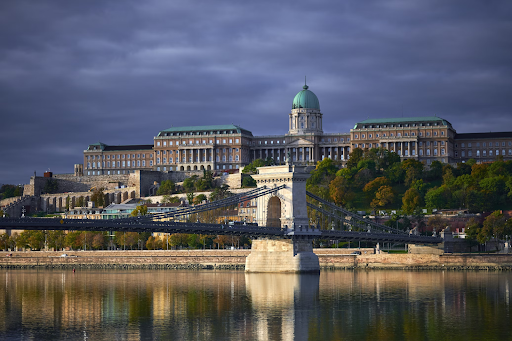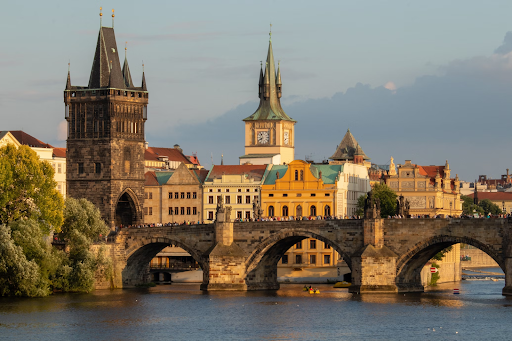Europe’s bridges are more than just crossings; they are storied structures that weave through the continent’s rich history and architectural prowess. From the ancient cobblestones of the Ponte Vecchio to the modern marvels like the Millau Viaduct, each bridge tells a tale of innovation, culture, and connection.
Embarking on the Prague to Vienna train, families are not just traveling between two cities; they are journeying through a corridor of history and architectural splendor. This route, famous for its scenic beauty, also serves as a gateway to some of Europe’s most magnificent bridges. Adding to the experience is the subsequent journey aboard the train from Vienna to Budapest, which offers an equally impressive array of architectural marvels spanning the mighty Danube River.
As the train leaves Prague, one cannot help but reminisce about the iconic Charles Bridge. Dating back to the 14th century, this historic bridge is lined with statues and offers a picturesque view of the Prague Castle. Families often gather here to enjoy street performances and capture memories against the backdrop of this Gothic masterpiece.
Arriving in Vienna, the journey introduces travelers to the Reichsbrücke. This impressive structure, rebuilt in the 20th century, is not just a bridge but a symbol of Vienna’s resilience and modernity. Stretching over the Danube, it offers stunning views of the city’s skyline, making it a favorite spot for families to watch the sunset and take leisurely strolls.

The train journey then leads to Budapest, a city famously split by the Danube into Buda and Pest. Here, the Chain Bridge stands as a testament to engineering ingenuity of the 19th century. It was the first permanent stone bridge to connect the two sides of the city, and its iconic lion statues at each end have become symbols of Budapest’s strength and elegance.
Beyond Budapest, Europe’s landscape is dotted with numerous other bridges, each telling its own story. In Paris, the Pont Neuf, despite its name meaning ‘New Bridge’, is ironically the oldest standing bridge across the River Seine. Its unique design and historical significance make it a must-visit for families exploring the city’s rich heritage.
Venice’s Rialto Bridge, famous for its stunning Renaissance architecture, serves as both a lively marketplace and a prime spot for watching gondolas smoothly navigate the Grand Canal. This iconic location is where history meets commerce, providing families with an opportunity to experience the lively essence of Venice’s rich history and dynamic present.
London’s Tower Bridge, an emblem of Victorian engineering, is another architectural marvel. Its drawbridge and high-level walkways provide unique views of the Thames and the city, captivating both adults and children with its grandeur and history.
The Millau Viaduct in France, a modern engineering feat, is the tallest bridge in the world. Its sleek design and towering pillars make it a striking contrast to the ancient bridges of Europe, showcasing the evolution of bridge construction over centuries.
In Porto, Portugal, the Dom Luís I Bridge, with its intricate metalwork and two-tiered arches, spans the Douro River. Designed by a disciple of Gustave Eiffel, it is both a functional transport link and a symbol of Porto’s industrial heritage.
Each bridge encountered on this journey, beginning with the Charles Bridge admired during the voyage from Prague and the Chain Bridge observed on the route to Budapest, transcends its role as a mere crossing. Each is a vital chapter in the narrative of Europe’s cultural and architectural history. These bridges stand as more than just structures; they are guardians of history, bridging the gap between the past and the present.
In conclusion, Europe’s bridges are much more than mere pathways connecting lands. They are architectural marvels that represent the genius of human ingenuity and the richness of European history. For families embarking on this journey, each bridge visited is an opportunity to marvel at the wonders of construction, to learn about the cultural significance of these structures, and to create lasting memories against the backdrop of Europe’s stunning landscapes.
